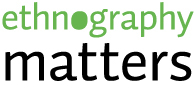Innovation in Asthma Research: Using Ethnography to Study a Global Health Problem (3 of 3)
 Editor’s note: This report is the final post in the Innovation in Asthma Research series. It shares with readers how anyone can contribute to The Asthma Files’s research. Catch up on the first post in this series that explained the project history and the second post that took us into the project’s knowledge platform. In our ongoing efforts at Ethnography Matters to highlight innovative ethnographic research, we believe The Asthma Files is a great example of how ethnographers are tying insights to action. In this case, The Asthma Files is collecting data to advance asthma research and environmental public health work.
Editor’s note: This report is the final post in the Innovation in Asthma Research series. It shares with readers how anyone can contribute to The Asthma Files’s research. Catch up on the first post in this series that explained the project history and the second post that took us into the project’s knowledge platform. In our ongoing efforts at Ethnography Matters to highlight innovative ethnographic research, we believe The Asthma Files is a great example of how ethnographers are tying insights to action. In this case, The Asthma Files is collecting data to advance asthma research and environmental public health work.
In our previous posts, we’ve talked about why we chose to study asthma ethnographically, and how working with the platform helps us rethink the way we do ethnography. In this concluding post, we’ll talk more about how other researchers and citizens can become involved with The Asthma Files.
Participating in The Asthma Files can take on many forms. Whether a researcher, student, or member of the non-academic public, it is possible to take part in the research project. Since its onset, the project was designed to draw in many kinds of participants.
The first kind of participant consists of ethnographers and other cultural analysts who want to work with materials archived in The Asthma Files, contribute new materials or create new asthma files.
For example, one researcher recently uploaded a series of photographs and images from Compton, CA, to document the heavy historical presence of chemical and petroleum refineries around an area heavily populated historical disadvantaged groups.

A smog cloud over south Los Angeles, near the city of Compton. A historically African-American and Latino community, Compton is surrounded on all four sides by major highways, and one of its elementary schools sits between a cement plant and a major oil refinery.
Our repository is publicly accessible, and contains sections to archives such things as primary material, grey matter, and media files. We’ve provided step-by-step instructions on how to upload material to the site once you’ve created an account. This will allow your material to be easily available to anyone wishing to use it for research or informational purposes.











Recent Comments